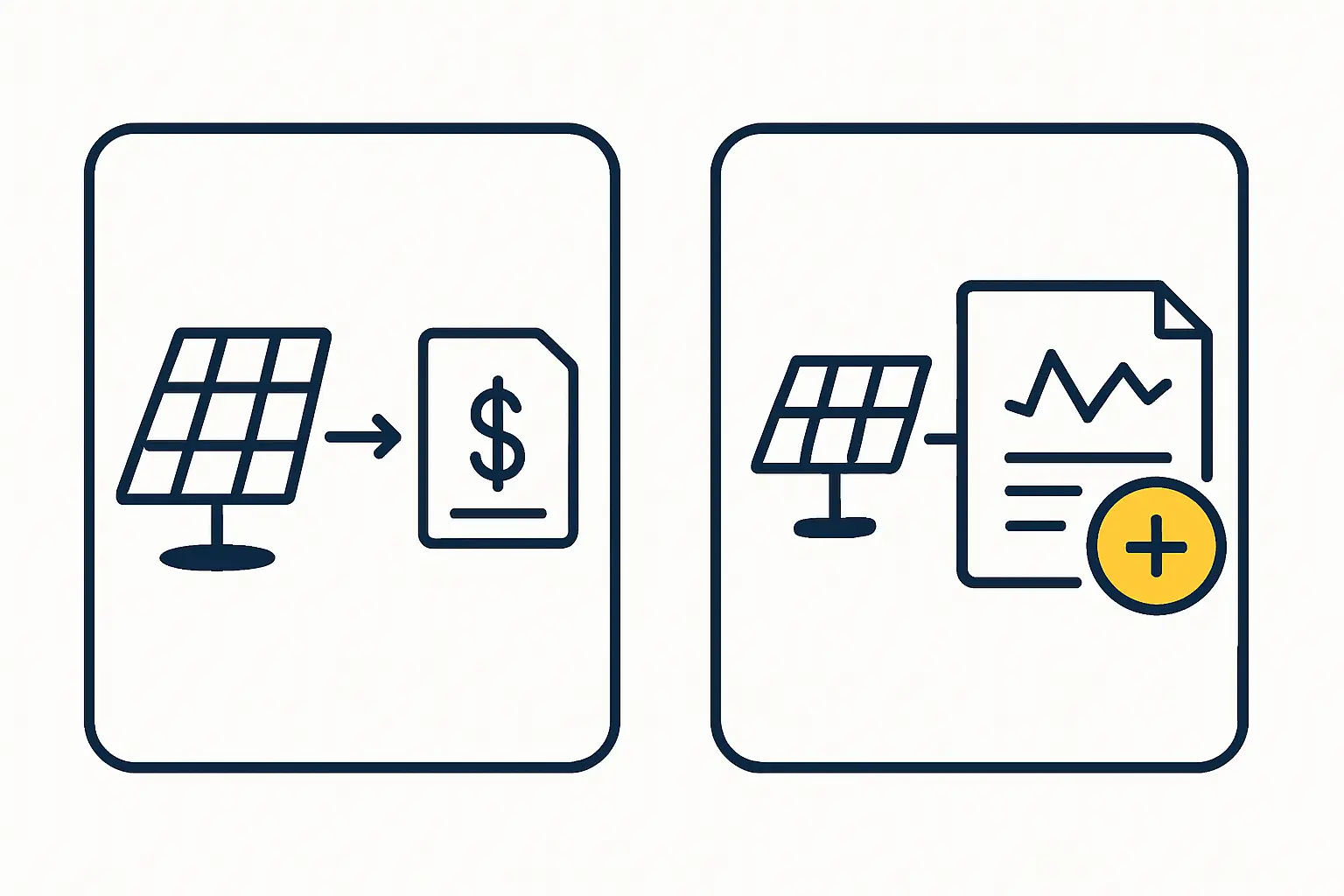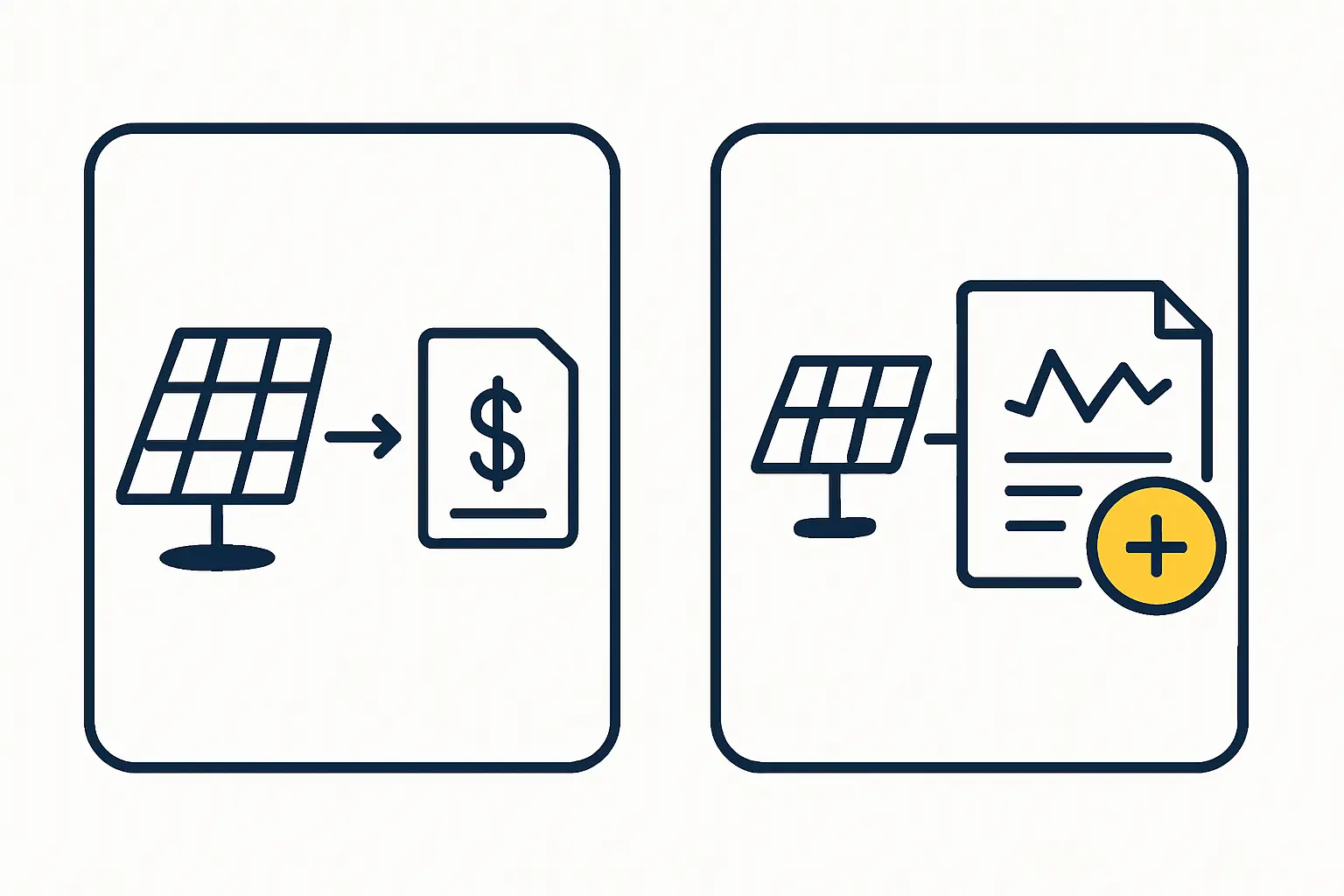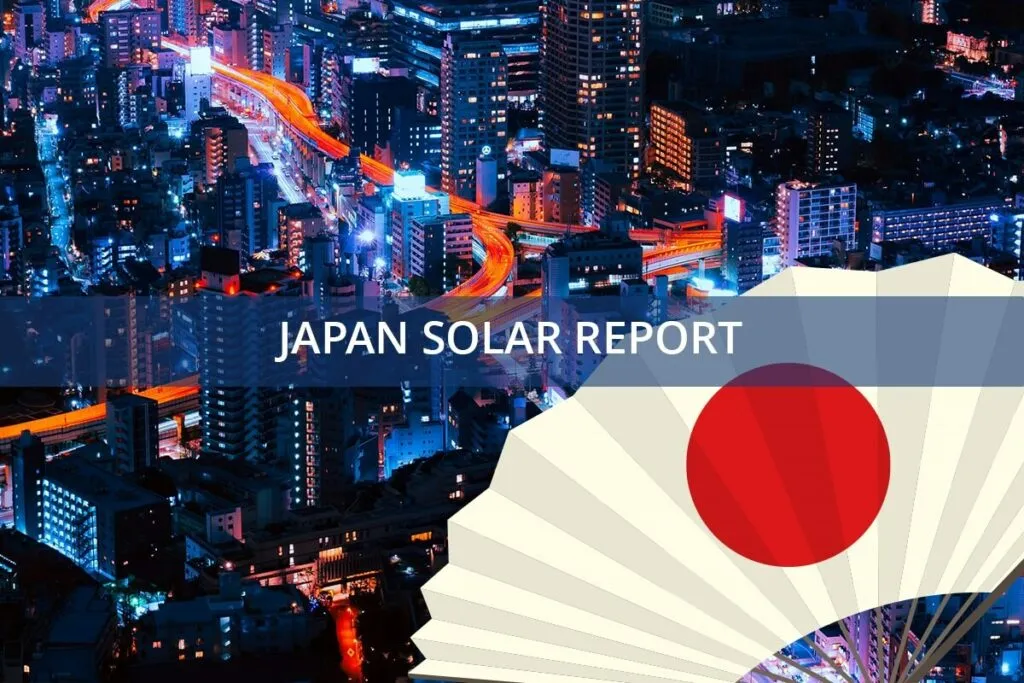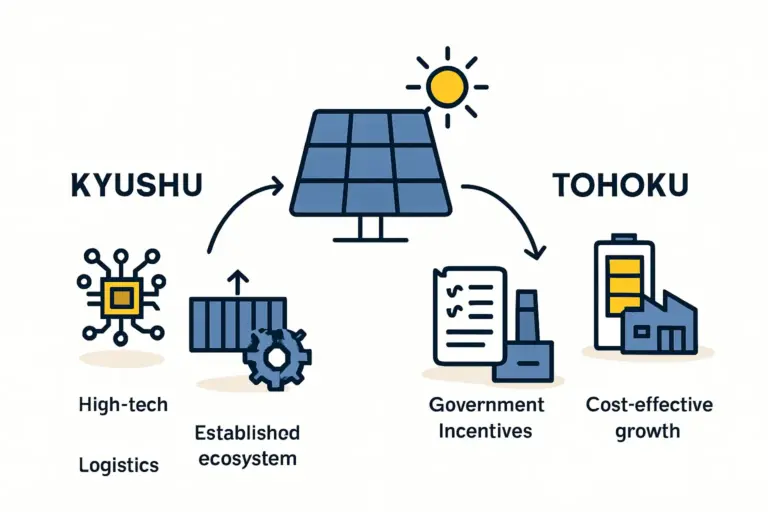Investors exploring Japan’s mature solar energy market will find a landscape of stability and long-term opportunity. But beneath the surface, a significant regulatory shift is underway: the transition from a fixed-price Feed-in-Tariff (FiT) to a market-linked Feed-in-Premium (FIP).
For professionals accustomed to predictable revenue models, this change introduces new complexity and risk. This article breaks down this evolution, explaining the fundamental differences between the FiT and FIP schemes and outlining how to factor these changes into a robust financial model for a solar power project in Japan. The goal is to transform uncertainty into a calculated strategy for making sound investment decisions.
Understanding Japan’s Solar Incentive Landscape
For years, Japan’s solar growth was fueled by the FiT scheme, which offered project developers a simple and powerful guarantee. The government’s strategic pivot to the FIP model marks a new era for renewable energy, aiming to integrate solar power more directly into the nation’s competitive electricity market.
The Original Model: Feed-in-Tariff (FiT)
The Feed-in-Tariff system is best understood as a long-term, fixed-price contract. Under this scheme, solar power producers sell the electricity they generate to the grid at a guaranteed rate determined at the project’s start, which then remains constant for up to 20 years.
For financial modeling, this created a highly predictable revenue stream. While the primary variables were operational—such as solar irradiation levels and power plant efficiency—the price per kilowatt-hour was locked in. This low-risk environment proved instrumental in attracting initial investment and building Japan’s solar capacity.
The New Model: Feed-in-Premium (FIP)
The Feed-in-Premium model fundamentally alters the revenue equation. Instead of a guaranteed price, producers now sell their electricity on the wholesale market, such as the Japan Electric Power Exchange (JEPX), at a fluctuating spot price.
On top of this market-based revenue, they receive a ‘premium’ from the government. This premium is calculated to ensure the project remains viable, but their total income is now directly exposed to market volatility. The core idea is to incentivize producers to act more like traditional power generators, responding to market signals of supply and demand.

The Impact on Financial Models: From Certainty to Volatility
The transition from FiT to FIP is like the difference between a fixed salary and a commission-based income. While the potential upside may be higher, so too are the risk and unpredictability. This change demands a far more sophisticated approach to financial forecasting.
Modeling Revenue under FiT
Financial modeling for a FiT-backed project is relatively straightforward. The core revenue formula is:
Revenue = (Total Electricity Generated) x (Fixed FiT Rate)
The main forecasting effort centered on accurately predicting the plant’s annual energy production, factoring in variables like panel degradation and weather patterns.
Modeling Revenue under FIP
Under the FIP scheme, the revenue calculation becomes a two-part equation with significant new variables:
Revenue = (Electricity Sold x Market Price) + FIP Premium
This introduces several critical complexities for the financial model:
-
Market Price Fluctuation: The wholesale electricity price isn’t stable; it can change hourly based on national energy demand, the availability of other power sources, and even weather. Accurate forecasting is no longer a simple multiplication.
-
The Premium Calculation: The FIP premium itself isn’t a flat rate. It’s typically calculated based on a ‘reference price,’ which may be an average market price over a certain period. If the market price is high, the premium is lower, and vice versa.
-
Negative Pricing Risk: During periods of very high solar generation and low demand, wholesale electricity prices can fall to zero or even become negative. In these scenarios, the FIP premium is typically not paid, exposing producers to significant revenue loss.
This shift from a predictable income stream to a variable one means investors must build financial models that can account for market dynamics—a skill that was largely unnecessary in the FiT era.
Key Factors for a Robust FIP Financial Model
A successful FIP-backed investment hinges on the quality of its financial model. Professionals must move beyond simple production estimates to incorporate sophisticated energy market analysis. Advanced revenue forecasting must now be a core component of any detailed financial projection.
Forecasting Wholesale Electricity Prices
The cornerstone of a FIP model is a credible forecast of JEPX spot prices. This is not a simple extrapolation of past data. A robust forecast must consider:
- Macroeconomic trends affecting energy demand.
- The planned commissioning of other large-scale renewable projects.
- Government energy policy and grid infrastructure investment.
- Price trends for complementary energy sources, like Liquefied Natural Gas (LNG).
Many entrepreneurs entering the market partner with specialized energy consultants to develop multiple price scenarios (e.g., base-case, optimistic, pessimistic) and understand the full range of potential outcomes.
Evaluating Curtailment and Grid Connection Risks
In regions with high concentrations of solar power, grid operators may be forced to ‘curtail’ output—instructing power plants to temporarily stop producing electricity to prevent overloading the grid. This risk is amplified for projects with ‘non-firm’ grid connections, which don’t guarantee that 100% of generated power can be exported.
Under FIP, every curtailed kilowatt-hour is lost revenue. Financial models must therefore include realistic assumptions about potential curtailment rates, based on a project’s specific location and grid connection agreement.

The Strategic Role of Power Purchase Agreements (PPAs)
To mitigate the revenue volatility of the spot market, project developers are increasingly turning to corporate Power Purchase Agreements (PPAs). A PPA is a long-term contract where a corporate buyer agrees to purchase electricity from the solar plant at a pre-agreed, fixed price.
This strategy effectively reintroduces a degree of revenue certainty. A hybrid model, where a portion of electricity is sold via a PPA and the remainder on the spot market, can offer a balanced risk profile. A sophisticated financial model will analyze the optimal mix between PPA and market sales.
A Practical Example: Investor Perspective
Drawing on experience with J.v.G. turnkey projects, a common question from entrepreneurs is how to compare a legacy FiT opportunity with a new FIP project.
Scenario A: FiT Project (10 MW)
- Investment: A project with existing FiT approval.
- Financial Model: Revenue is highly predictable for 20 years. The internal rate of return (IRR) can be calculated with high confidence, perhaps in the 6–8% range. The primary risks are related to construction delays and operational efficiency.
Scenario B: FIP Project (10 MW)
- Investment: A new project to be developed under the FIP scheme.
- Financial Model: The base-case IRR might appear higher, perhaps 9–11%, assuming average market prices. However, sensitivity analysis is crucial. A ‘low-price’ scenario could see the IRR drop to 4%, while a ‘high-price’ scenario might push it to 13%. The risk is market-based, not just operational.
The FIP project offers potentially higher returns but requires investors to accept and manage market price risk. This changes the entire due diligence process, placing a premium on expert market analysis and strategic planning. This level of planning is essential, whether building a power plant or considering a full turnkey solar manufacturing line to supply such projects.

Frequently Asked Questions (FAQ)
What is the main difference between FiT and FIP for an investor?
The main difference is risk versus predictability. FiT offers a guaranteed, fixed price, leading to highly predictable revenue. FIP exposes a project’s revenue to fluctuating wholesale electricity prices, introducing volatility but also the potential for higher returns.
Is the FiT scheme completely unavailable in Japan now?
The FiT scheme is being phased out for larger commercial projects but may still be available for smaller residential or low-capacity installations. FIP is now the primary incentive for new, large-scale solar development.
What is the JEPX?
The Japan Electric Power Exchange (JEPX) is the country’s wholesale electricity market where power producers sell electricity and retailers buy it. The spot price on the JEPX is a key determinant of revenue for projects under the FIP scheme.
How does curtailment affect project profitability?
Curtailment is a direct loss of revenue. When a grid operator instructs a plant to reduce its output, that unsold electricity generates no income. High curtailment risk can significantly reduce a project’s overall profitability and must be carefully estimated in the financial model.
Are PPAs becoming more common in Japan’s FIP era?
Yes. As project developers and investors seek to reduce their exposure to spot market volatility, corporate PPAs have become an increasingly popular tool. They provide a stable, long-term revenue source that can de-risk a portion of a project’s output.
Conclusion and Next Steps
The shift from FiT to FIP in Japan represents the maturation of its solar market, moving it from a subsidized niche to an integral part of the competitive energy landscape. For professionals and entrepreneurs, this change demands a more sophisticated approach to investment analysis and risk management.
Building a financial model that accurately reflects market volatility, curtailment risks, and strategic options like PPAs is no longer optional—it is the foundation of a successful solar investment in Japan today. While the complexity has increased, so too have the opportunities for well-prepared investors to capitalize on this dynamic market.
For those ready to enter this market, creating a detailed financial projection is the crucial first step. Expert resources, such as the structured e-courses available on pvknowhow.com, can provide the framework you need for this critical planning phase.






